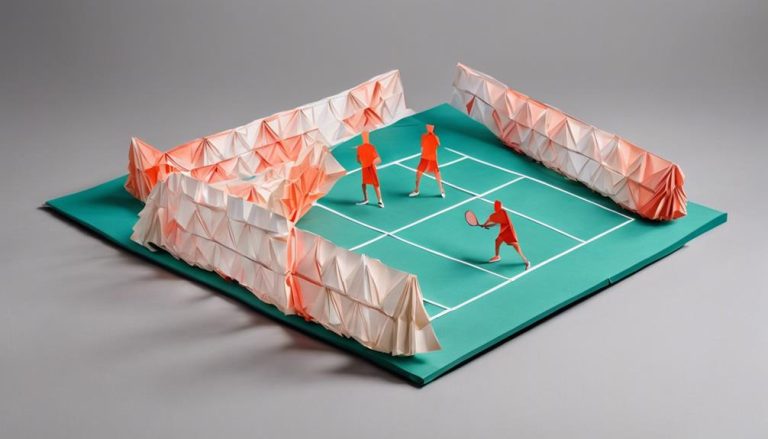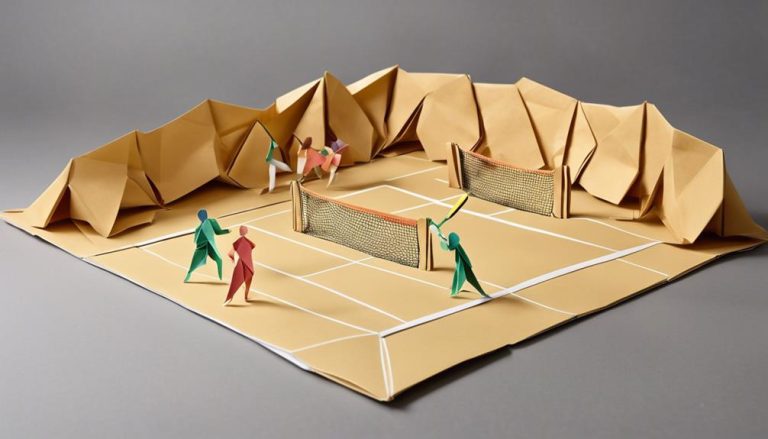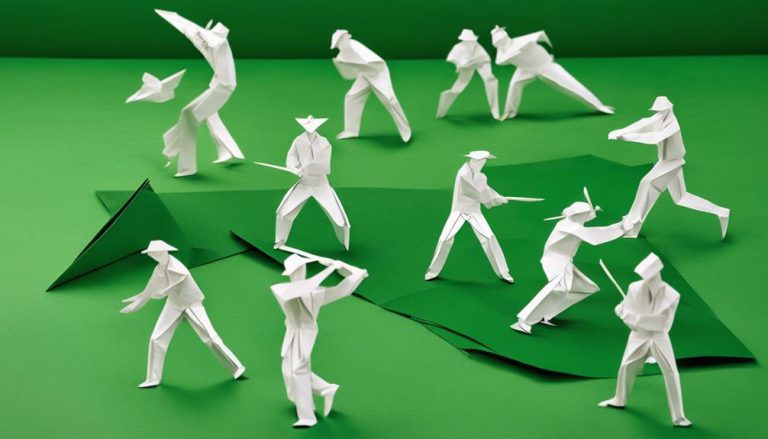General Rules of Hockey
Discover the fundamental rules governing hockey. Understand offsides, where positioning is crucial, along with icing infractions and their strategic use. Be cautious about penalties and learn effective power play strategies. Master faceoff procedures for better game control. Keep the play fair by avoiding goalie interference, and grasp overtime and shootout tactics. Ready to unravel the secrets that shape the game?
Offside Rule
If you're new to hockey, understanding the offside rule is vital for grasping the flow of the game. Offside positioning is a key aspect of hockey that can often be perplexing. In simple terms, a player is in an offside position when they are in the offensive zone before the puck enters that zone. However, being in an offside position is not the same as committing an offside offense.
To avoid offside penalties, players must make sure they are onside before the puck crosses into the offensive zone. Offside strategies are employed by teams to create scoring opportunities while abiding by the rules. Players often use quick passes or well-timed movements to stay onside and catch the defense off guard. Understanding offside positioning and strategies can give you an edge in the game, allowing you to anticipate plays and make impactful contributions to your team's success. So, keep a close eye on your positioning and make sure you're always one step ahead of the offside line.
Icing Infractions
Understanding icing infractions in hockey is crucial for players and fans alike to comprehend the game's dynamics and rules. In hockey, icing occurs when a player shoots the puck from behind the center line all the way down the ice past the opposing team's goal line, without anyone touching it. This results in a stoppage of play, and the game resumes with a faceoff in the defending team's zone.
Icing infractions can have a profound impact on game strategy and coaching tactics. Teams may use icing strategically to relieve pressure or communicate with players on the ice. However, excessive icing can lead to fatigue and disrupt team chemistry. Coaches often emphasize the importance of minimizing icing infractions to maintain possession and control of the game.
Effective player communication is key to avoiding unnecessary icing calls. Teammates must work together to avoid icing situations by making quick decisions and executing precise passes. Understanding icing infractions enables players to enhance their game strategy, improve coaching tactics, and strengthen team chemistry for overall success on the ice.
Penalties and Power Plays
To fully grasp the dynamics of hockey gameplay, it is imperative to comprehend the implications of penalties and power plays in the sport. Understanding the nuances of penalty box discipline and power play strategies can have a major impact on the outcome of a game. Here are some key points to keep in mind:
- Penalty Box Discipline: It is essential for players to exercise caution and avoid actions that may lead to penalties. Time spent in the penalty box can put your team at a disadvantage, making it important to maintain composure on the ice.
- Power Play Strategies: When your team has the numerical advantage due to a penalty against the opposing team, employing effective power play strategies becomes crucial. Capitalizing on this opportunity can tilt the game in your favor.
- Referee Discretion: Referees play a pivotal role in enforcing penalties based on player conduct. Understanding how referee discretion works can help players navigate the game more effectively.
- Player Conduct Penalties: Player behavior on the ice can result in various penalties. Being aware of what constitutes misconduct can prevent unnecessary penalties and maintain a fair playing field.
Faceoff Procedures
When starting a faceoff, remember the importance of player positioning and adherence to the rules. Understanding faceoff violation penalties can help you avoid costly mistakes during pivotal moments in the game. Stay focused and alert to make the most out of every faceoff opportunity.
Starting the Faceoff
When preparing for a faceoff in hockey, the referee will position the players appropriately at center ice. Faceoffs are pivotal moments that can determine possession and momentum. Here are essential tips for starting a faceoff:
- Faceoff strategies: Before the puck drops, have a plan in mind. Communicate with your teammates to execute a coordinated strategy.
- Faceoff positioning: Focus on getting into the right stance quickly. Your body positioning can give you an advantage in winning the faceoff.
- Timing is key: Anticipate the referee's movements and the puck drop timing. Being quick off the mark can help secure possession.
- Stay alert: Keep your eyes on the puck and be ready to react instantly. Quick reflexes are crucial in winning faceoffs.
Player Positions During
As players approach the center ice for a faceoff in hockey, their positions play a vital role in determining the outcome and setting the stage for the rest of the game. Defensive strategies and offensive tactics come into play during this pivotal moment. Team dynamics and individual skills are on full display as players strategize to gain possession of the puck. Defenders focus on thwarting the opponent's advances, while offensive players aim to outmaneuver their counterparts. The way players position themselves can impact the momentum of the game, influencing the flow of play and potential scoring opportunities. Understanding the nuances of player positions during faceoffs can give your team an edge, so mastering these techniques is key to success on the ice.
Faceoff Violation Penalties
Understanding the penalties for faceoff violations in hockey is essential for players and teams aiming to follow the game's regulations and maintain a fair play environment. When it comes to faceoff procedures, there are specific rules in place to guarantee fairness and sportsmanship. Here are some key points to keep in mind:
- Faceoff violations can lead to penalties for the offending player or team.
- Proper positioning and adherence to faceoff strategies are fundamental to avoid violations.
- Referees closely monitor faceoff techniques to enforce the rules effectively.
- Consistent enforcement of faceoff regulations helps uphold the integrity of the game.
Goalie Interference
When it comes to goalie interference in hockey, two key points to ponder are ensuring clear goaltender visibility and understanding that referee judgment is vital. It's essential for players to allow the goalie the space to make saves without obstruction or interference. Remember, goalie interference is a complex area where the referee's decision plays a significant role in maintaining fair play.
Clear Goaltender Visibility
To guarantee fair play and minimize disruptions, it is essential for players to maintain clear visibility of the goaltender during gameplay in hockey. Goalie equipment and net positioning play vital roles in ensuring a clear line of sight for both the goaltender and other players on the ice. Here are four key points to ponder:
- Goalie Equipment: Goalies must wear distinct and contrasting colors to stand out from the rest of the players, making it easier for everyone to track their movements.
- Net Positioning: The net should be placed in such a way that it doesn't obstruct the view of the goaltender, allowing them to see the play develop and react accordingly.
- Communication: Players need to communicate effectively to avoid blocking the goaltender's vision.
- Penalties: Interfering with the goalie's visibility can result in penalties, emphasizing the importance of maintaining a clear line of sight.
Referee Judgment Call
Ensuring clear communication and consistent enforcement of rules, referee judgment plays a pivotal role in determining instances of goalie interference during hockey games. Referee discretion in evaluating goalie interference often sparks player reactions, as it can greatly impact game outcomes. This call involves a fine line, as referees must decide if a player's actions impeded the goalie's ability to make a save. The subjective nature of these calls often leads to controversy, with fans, players, and coaches sometimes disagreeing with the referee's decision. Goalie interference calls can sway the momentum of a game, affect scoring opportunities, and ultimately influence the final result. Understanding the nuances of referee judgment in goalie interference situations is essential for players and fans alike to comprehend the complexities of officiating in hockey.
Overtime and Shootouts
Getting through the complexities of hockey rules, grasping the dynamics of overtime and shootouts can greatly impact the outcome of a game. When it comes to these critical moments in a match, understanding the strategies and mental aspects involved is key.
Four key points to keep in mind:
- Overtime strategy: Teams often adopt a more conservative approach in overtime, focusing on puck possession and defensive stability to secure a win without heading to a shootout.
- Shootout tactics: Shootouts require a mix of precision, deception, and quick thinking. Players need to outsmart the opposing goaltender while staying composed under pressure.
- Player endurance: Endurance is crucial in overtime and shootouts, as fatigue can lead to mental lapses and physical mistakes. Teams with better conditioning often have an edge in these situations.
- Mental toughness: Overtime and shootouts test players' mental fortitude. Staying calm, confident, and focused is essential to making the right decisions and executing effectively when it matters most.
Frequently Asked Questions
Can a Player Use Their Hand to Stop the Puck From Going Into the Net?
So, you're thinking about using your hand to stop that puck from sneaking into the net, huh? Well, let's just say that might not be the best idea. Hand interference? Goalie interference? Rule clarification needed ASAP!
What Happens if a Player Receives a Penalty While Already Serving a Penalty?
If a player receives a penalty while already serving one, they face double penalties. This creates consequences, as the opposing team gains strategic advantage with increased power play opportunities. Being penalized twice can shift the game dynamics markedly.
Are Players Allowed to Body Check Opponents During Faceoff Procedures?
During faceoff procedures, it's essential to maintain proper faceoff etiquette. While body checking isn't allowed, players can strategically position themselves to impede opponents. Defensive strategies, like stick placement and body positioning, are key.
How Is Goalie Interference Determined by the Officials?
When officials determine goalie interference, they analyze if a player disrupts the goalie's ability to move freely. Video review helps guarantee fair calls. Goalie positioning is vital to assess interference accurately and maintain game integrity.
Are There Any Restrictions on Which Players Can Participate in the Shootout During Overtime?
In the thrilling shootout during overtime, player eligibility becomes essential. Team decisions on who participates are strategic. Immerse yourself in the excitement of shootout rules and overtime strategies as you witness the intense battle unfold.






